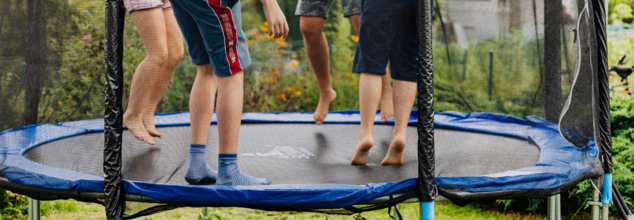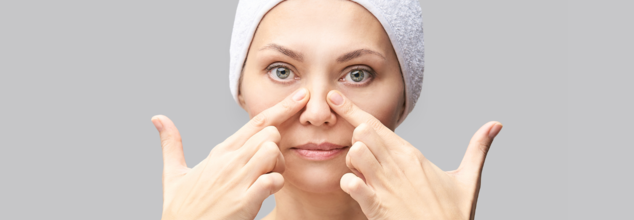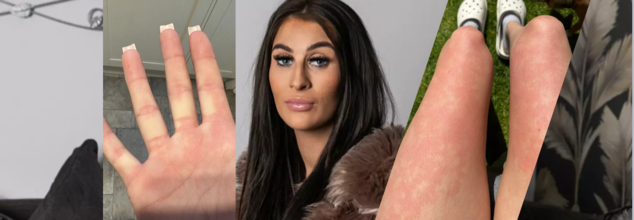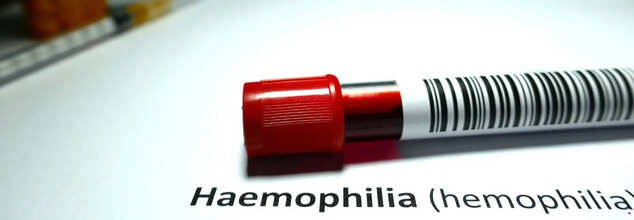
Credits: Canva
Trampoline Therapy Can Help With Your Mental Well-being
Mental health is an important part of a healthy life and there are different types of therapy that can help one maintain stable mental and emotional health. The new one in town is trampoline therapy, also known as rebound therapy.
It is a great way to ensure that your mental as well as physical health is balanced, as rebound therapy involves use of trampolines to provide therapeutic exercise for individuals with various needs, including physical disabilities, learning disabilities, sensory impairments, and autism.
Many who try these sessions out say that they feel safe from stress and recharged by the motion of bouncing on down on a trampoline.
A BBC report mentions: "Surveys conducted among patients in the women’s mental health services at St Andrew’s Healthcare (in Northhampton, UK) showed positive results from rebound therapy. Around 60% of participants reported improvements in overall strength and fitness, with many able to perform higher-level movements. Additionally, 95 per cent of patients noted an improvement in their mood after sessions"
What Is The Science Behind It?
The rhythmic bouncing motion of a trampoline can have an effect on the body and mind. Engaging in physical activity such as trampoline therapy releases endorphins, which a natural mood elevators. These feel-good chemicals can also help reduce stress, anxiety, and depression.
It also is a great cardiovascular workout and can improve blood flow, oxygenation to the brain. This can also enhance cognitive function and mood.
The rhythmic bouncing motion of a trampoline also helps to reduce stress, promote relaxation and serve as a distraction from worries and negatives thoughts. It also helps to boost confidence, as physical fitness and coordination can help in self-esteem. Furthermore, it can be a fun activity that can help one socialise and build relationships.
How to Add Trampoline Therapy to Your Routine
Start gradually: If you're new to trampoline therapy, begin with short sessions and slowly increase the time and intensity.
Listen to your body: Pay attention to how your body feels and avoid pushing yourself too hard.
Enjoy the process: Make it fun! Trampoline therapy can be a joyful part of your day.
Trampoline therapy is a fun and engaging way to boost both physical and mental well-being. Incorporating it into your routine can unlock numerous health benefits.

Dark Spots On Your Nose Aren’t Blackheads - But Should You Be Concerned?
Have you ever noticed the small, raised bumps on your nose? The ones who have noticed these, often find themselves looking for what they are – if they are harmless or not and how to get rid of them. This prompts many people to assume that they are blackheads, however they are still unsuccessful at removing them.
Here’s Why
In reality, these dark spots are not blackheads but a common and normal part of your skin. Recently, Dr Neera Nathan, a dermatologist and researcher at Massachusetts General Hospital took to social media to talk about the same. In her video, she explained what these raised bumps on our nose are. “These little dots are not blackheads. They are completely normal structures we all have called sebaceous filaments,” she said.
What Are Sebaceous Filaments?
Sebaceous filaments are like tiny, thin strands or tubes that live inside your oil glands also called sebaceous glands. Their job is to help move a greasy liquid called sebum from these glands up to the surface of your skin. Think of them as little pipelines for your skin's natural oil.
The Cleveland Clinic explains that these dark spots are a normal and healthy part of your skin. They play an important role in helping the sebum get to where it needs to be, that is on the epidermis. The sebum that these filaments help move is actually good for you. It helps to keep your skin and hair moisturized so they don't get dry and also gives them a natural shine. So, these little filaments are actually your skin's helpers.
Tips To Make Dark Spots Less Noticeable
Even though these sebaceous filaments are a normal part of our skin, Dr Nathan did give her three best tips for people who want to make them less visible:
- “Massage this sulfur treatment into your sebaceous filaments and leave it on for 10 minutes before rinsing off.”
- She also said that salicylic acid, which you can find in some face washes, can help to "melt away" these filaments by cleaning deep inside your pores and getting rid of extra oil and dirt without hurting your skin.
- Lastly, she said that a product called adapalene, which you usually need a prescription for in the UK under the name Differin, can also help to dissolve these filaments and make the skin on your nose look smoother.
How To Deal with Oily Skin
The oil on your skin can be a result of various factors like your genes, how old you are, the weather, stress, and what you eat. You can't really change if your skin is naturally oily, but having a good skincare routine can help manage it. Experts suggest washing your face twice a day and after you exercise, avoiding harsh products, not scrubbing your face too hard, using a gentle toner, using a light moisturizer and sunscreen, drinking enough water, and trying not to touch your face too much during the day.

Credits: SWNS
'Even Drinking Water Burns My Throat', Rare Water Allergy Leaves UK Woman In Agonising Pain- What Is Aquagenic Urticaria?
For most of us, a hot or even a cold shower is luxury. For 26-year-old mom Joanna Watkins, it is torture. She has an extremely rare condition called Aquagenic Urticaria—a water allergy. From showering to tears, and even sweating, any exposure to water triggers intense burning, itching, and hives that last for hours on end.
And this is the kicker—she developed this condition in pregnancy. What started out as some minor irritation of the skin soon became excruciating pain with every drop of water. Now, something as ordinary as washing her hands, walking in the rain, or even drinking a glass of water is no longer routine—it's an act of courage.
Here, we consider what it truly is to live in a body that rejects the most basic building block of life, how she manages motherhood within it all, and the larger conversation surrounding invisible illnesses that affect not only the body—but every aspect of daily living.
This strange and mostly misjudged allergy to water has turned mundane daily activities into frightening experiences. From coping with her pregnancy to tending her toddler, Kendall navigates cautiously through her life, hoping for relief from a condition whose origins and essence are still poorly understood—by many physicians and medical researchers themselves.
What is Aquagenic Urticaria?
Aquagenic urticaria, also referred to as "water allergy," is a rare condition wherein the skin responds to contact with water at any temperature or level of cleanliness. Upon exposure, patients typically experience burning hives, redness, and itching within minutes. The condition is found in fewer than 100 people all over the world and occurs more often in women.
In Kendall's instance, even sweat or tears from her can trigger a skin reaction that is painful. "When it started, it was like I was being stung all over my body with nettles," she recollects. "Now it is like someone has held a flame to my skin."
Kendall first became ill at 15 years of age after breaking out in hives following a shower. She was initially kept under control using over-the-counter antihistamines like Piriton. Gradually, though, her condition worsened. It was not until 2021, nearly a decade later, that she was officially diagnosed by a dermatologist from the University Hospital of North Durham.
Even after diagnosis, treatment and information regarding it is limited. "The GP didn't know what to do. It's just so odd a condition, not many people have it, and not many people have even heard of it," she says.
Life at the Mercy of the Weather
Having aquagenic urticaria has placed Kendall in a highly regimented lifestyle. She checks the weather every day, avoiding rain as well as hot, humid conditions. "If I find myself outside unexpectedly, my body reacts and it hurts so much," she says. Her exposure to water is so limited that she can take a shower or bath every other day—having someone close at hand in case her body closes up.
"I cry through the process. It takes two hours, though it only takes half an hour. It's that bad my body goes into shock," she says. During these episodes, Kendall needs someone to look after her son, demonstrating just how far this condition reaches into every area of her life.
One of the hardest aspects of Kendall’s condition is how it impairs her ability to care for her child. “I’ve never been able to give my one-year-old son a bath. My mom has to do it for me,” she says, visibly distressed. Even drinking water causes a burning sensation in her throat, leaving her constantly dehydrated and exhausted.
The illness has left her feeling alone and powerless. "At the moment, everything feels so humiliating. I just want a normal life where I can go out in the rain, have a shower, and bathe my son," she says.
What Causes Aquagenic Urticaria?
Though the exact cause is unclear, researchers have proposed two major theories:
Interaction between water and sebum: Water may alter the skin's natural oils (sebum), stimulating mast cells to discharge histamines, resulting in hives.
Water as a carrier: Water may dissolve foreign allergens or irritants on the skin, inducing an immune reaction.
Due to the infrequency of the condition, studies are few and facts are mostly anecdotal or case-study oriented.
Can Water Allergy be Treated?
There is not yet a verified treatment for aquagenic urticaria. It is treated symptomatically with a variety of the following:
Oral antihistamines: Often the first line of therapy.
Topical therapy: In the form of corticosteroid cream and skin barriers.
Phototherapy: UV therapy to desensitize the skin.
Other medication: Including drugs used for asthma, anabolic steroids, and SSRIs (Selective Serotonin Reuptake Inhibitors).
Unfortunately, due to the fact that she is pregnant, Kendall's treatment opportunities are now minimal. "They've tried many different medications, but I continued to react. I still have not found anything that works," she says. After she delivers her baby, she would like to return to attempting more aggressive treatment.
Kendall is sharing her story in the belief that someone out there will be able to tell her something new about her condition, or suggest a new lead in treatment. "I do hope that someone might ring up and know what to do," she says.
Her vulnerability and resilience come across in every sentence. Though aquagenic urticaria is a medically rare condition, its psychological effect on sufferers and their families is very real.

Credit: Canva
5 Things That Hemophilia Patients Wish You'd Know About Their Condition
Hemophilia is a rare, genetic blood disorder, that causes your blood to clot less, resulting in an increased risk of bleeding and bruising. The platelets and proteins in the plasma work together to stop the bleeding by forming a clot over the injury. Hemophilia occurs when your body doesn't make enough of these clotting factors.
What Are The Symptoms Of Hemophilia?
- The most significant symptom is unusual or excessive bleeding or bruising.
- People with hemophilia may develop large bruises after minor injuries. This is a sign of bleeding under the skin.
- They may bleed for an unusually long time, whether after surgery, after dental treatment or simply from a cut finger.
- They may start bleeding for no apparent reason, such as sudden nosebleeds.
How To Identify Hemophilia In Babies
Babies and toddlers may bleed from their mouths after minor injuries, like bumping their mouths on a toy.
Babies and toddlers who bump their heads often develop goose eggs — large round lumps on their heads.
These symptoms may happen if babies and toddlers have internal bleeding into a muscle or joint. They may have areas on their bodies that look bruised and swollen, feel warm to your touch or make your child hurt when you gently touch the area.
A hematoma is a mass of congealed blood that gathers under babies’ or toddlers’ skin. Babies and toddlers may develop hematomas after receiving an injection.
Here Are 5 Things That Hemophilia Patients Wish You'd Know
Dr Nivedita Dhingra, Associate Director, Haematology and Bone Marrow Transplant, Max Super Speciality Hospital Patparganj, listed 5 things that Hemophilia patients wish you'd know about their condition.
1. Hemophilia is a congenital bleeding disorder.
It is usually inherited and predominantly affects males, though females can be carriers. The disorder impairs the blood’s ability to clot properly.
2. Affected people tend to have prolonged bleeding from minor injuries, and in severe forms, spontaneous bleeding into the joints can lead to deformities. This joint bleeding, called hemarthrosis, can be extremely painful and may result in long-term disability if left untreated.
3. It occurs due to the reduction or absence of clotting proteins and is classified as Hemophilia A when Factor VIII is deficient and Hemophilia B when Factor IX is reduced. Both types have similar symptoms but differ in genetic mutations and treatment approaches.
4. Timely diagnosis and initiation of treatment with factor concentrates can greatly minimise bleeding episodes and allow patients to lead productive lives. Prophylactic therapy, where clotting factors are regularly infused, is particularly effective in preventing joint damage and other complications.
5. Intrauterine testing and prenatal diagnosis are recommended. These help at-risk families make informed reproductive choices and prepare for early intervention after birth.
© 2024 Bennett, Coleman & Company Limited

